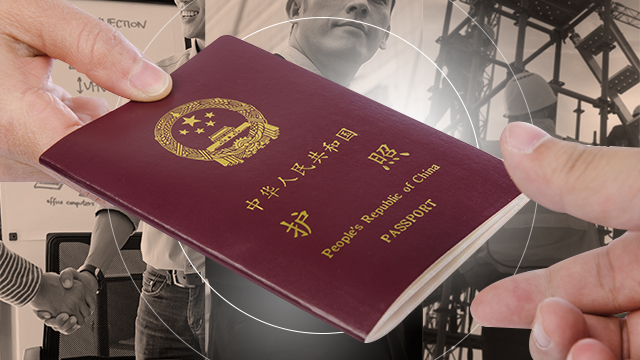SUMMARY
This is AI generated summarization, which may have errors. For context, always refer to the full article.
![[ANALYSIS] Why the influx of Chinese in the Philippines?](https://www.rappler.com/tachyon/r3-assets/612F469A6EA84F6BAE882D2B94A4B421/img/4A95C4B879144A4CB8246639B24020C9/chinese-ph.jpg)


It’s a question many of us ask whenever we walk the streets of Makati, Bonifacio Global City, or the Manila Bay Area.
In recent years many Filipinos couldn’t help but notice the sudden rise in the number of Chinese in the Philippines – whether as tourists, workers, or investors.
Doubtless President Duterte’s historic pivot to China plays a huge role in this. His overt friendliness toward the Chinese has encouraged many of them to visit, work, and do business here.
But in this article we look at the data behind this Chinese influx and explore the various other factors – especially economic ones – that might explain it. To what extent can we trace it to Duterte’s pivot to China?
Tourists
Let’s start with the Chinese tourists.
In 2018, more than a million Chinese tourists visited the Philippines, up from just 163,689* a decade ago. The share of Chinese tourists has also tripled over the same period, from 5% to 15%.
Figure 1
This Chinese tourist boom can be traced to 3 main factors: higher incomes, fewer travel restrictions, and “tourism diplomacy.”
First, the Chinese simply have lots of money to spend for travel. Last year Chinese outbound tourists worldwide spent a total of $258 billion in 2017, making China the world’s top tourism spender.
At the outset, this would seem odd because the Chinese economy currently rests on shaky ground.
Chinese economic growth last year dropped to a mere 6.6%, the lowest since 1990 (Figure 2). At the same time, only by 2020 will the average Chinese be as prosperous as the average US citizen back in 1980.
However, 6.6% is still fairly respectable, and years of sky-high growth – averaging an impressive 10% a year from 1980 to 2010 – have now made traveling affordable for many a Chinese household.
Figure 2
Second, traveling has become a lot easier for Chinese tourists.
Visa policies have been relaxed in countries friendly to China. Direct international flights are also reaching some of China’s newest cities where a lot of the middle class are.
This so-called “Exit Revolution” has led to the overwhelming number of Chinese tourists worldwide. From just 57 million in 2010, outbound Chinese tourists numbered 142 million in 2018. They like to travel the most to Thailand, Japan, Vietnam, and South Korea.
There’s still a lot of room for the tourism industry since only 6% of Chinese had a passport as of 2017.
Third, the Chinese government has learned to leverage its massive supply of tourists and is now said to employ “tourism diplomacy.”
That is, rewarding friendly countries with strong tourist arrivals while punishing unfriendly ones with the opposite. This may come in the form of, say, travel warnings or pressures on travel agencies.
In this sense, you might draw a direct line between the recent Chinese tourist boom in the Philippines and Duterte’s pivot to China.
Workers
Booming outbound tourism has consequently opened doors for many Chinese workers seeking jobs abroad.
Here in Metro Manila we’ve seen firsthand a surge of Chinese workers. From 2005 to 2018 the number of Chinese holders of alien employment permits (AEPs) issued by the Department of Labor and Employment grew by 24 times (Figure 3). The share of Chinese AEP holders also rose with it.
Figure 3
According to experts, one reason behind this could be the sophisticated migration networks that the Chinese are known to develop in and out of mainland China.
A Chinese job seeker can usually expect to get help from fellow Chinese who can navigate the processes and help them at every step – from work permit and visa applications, accommodations, to even transportation.
But many Chinese workers reportedly enter the Philippines using tourist visas and either apply for work visas or simply overstay their welcome.
A bulk of new Chinese workers can also be found in burgeoning Philippine online gambling operations (POGOs).
Since online gambling is prohibited by the Chinese government, many Chinese POGO workers who come to the Philippines are wary of dealing with Chinese embassy officials in Manila for fear of being arrested or deported.
Hence, they can expect little support from their embassy in case of legal trouble. A number of Chinese workers have had their passports withheld by their employers. Their movements outside Metro Manila are also often restricted. (READ: A Chinese online gambling worker’s plight in Manila)
Investors
Chinese direct investments have also ballooned in recent years, up from relatively negligible levels (Figure 4).
Figure 4
According to research by China expert Alvin Camba for the Philippine Center for Investigative Journalism, most of these new investments converge in the service sector: wholesale and retail trade, real estate, tours, hotels, entertainment, and online gambling.
One reason for the rise of Chinese investments is the Philippines’ promising economic prospects. Last quarter GDP growth clocked in at 5.6%. Although frustratingly slower than expected, this is still good enough for many a Chinese investor.
But perhaps most important is Duterte’s pivot to China, which creates a business climate that is friendlier to Chinese investors than ever before.
In previous trips to China, Duterte secured investment pledges from many Chinese companies. Indeed, the largest spike in investment pledges occurred in the last quarter of 2018, when it reached a level 180 times larger than in the year prior.
Outgoing House Speaker Gloria Macapagal Arroyo, who is a mentor of sorts to Duterte and a champion of Philippines-China ties, also takes it upon herself to encourage more Chinese investors to do business in the Philippines.
Beware of racism
All in all, one might confidently say that President Duterte’s pivot to China explains a lot of the recent influx of Chinese into the Philippines.
But whenever we talk of China’s growing presence and influence in our economy, it pays to distinguish between the motives of the Chinese private sector (consisting of tourists, workers, and investors) and that of the Chinese government (which recently rammed a Philippine fishing vessel in the vicinity of Reed Bank and offered us onerous loan agreements to finance some of Duterte’s infrastructure projects).
The last thing we want is to harbor racist or xenophobic feelings toward private Chinese citizens in our midst, especially workers wishing to stay here for extended periods.
Many of them – just like the typical OFW – want nothing more than to eke out a living in a strange, foreign land. – Rappler.com
The author is a PhD candidate at the UP School of Economics. His views are independent of the views of his affiliations. Thanks to Calla Wiemer for useful comments and suggestions. Follow JC on Twitter (@jcpunongbayan) and Usapang Econ (usapangecon.com).
Editors’s Note: A previous version of this piece indicated 107,456 tourists which is what was recorded in 2005. This has been corrected to 163,689.
Add a comment
How does this make you feel?
There are no comments yet. Add your comment to start the conversation.